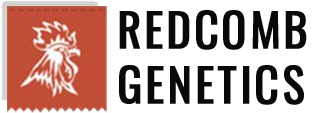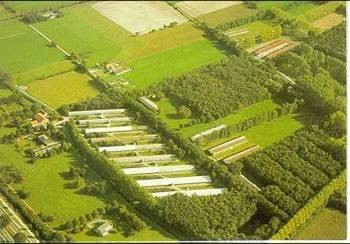As the name Hypeco-CPI-Bovans indicates the company was an amalgamation of three groups who began commercial breeding in the 1950’s and had origins in the Dutch and Belgium farming cooperatives. In 1951 five Dutch poultry specialists visited the U.S. to study the poultry industry in particular the breeding industry. What they reported spurred the breeders to implement a plan to remain independent and create a different style of breeding organization. In 1955, three cooperatives of feed compounders and small breeders, Cebeco, Cehave and Landbouwbelang provided the financial guarantees for a co-operative poultry breeders institute (Cooperatief Plumveefokkers Instituut) – CPI. The three had a 40%, 40% and 20% ownership of the shares respectively. The CPI also took over the Enschede Poultry Institute that was also a cooperative of Dutch breeders. The 50 breeders in CPI purchased the land and built a testing and breeding farm at Nuland. The Belgium Farmers Union (Belgium Boerenbond) was a similar co-operative based on feed compounders and small breeders. The breeding farms were based around Poppel and broilers and layers were marketed. In 1957 the co-operatives built by CPI and the Belgium Farmers Union merged to form Hypeco with a 50%-50% ownership, the three CPI cooperatives having 20%, 20% and 10% of the shares. In the years to follow the breeding of the laying and broiler strains was gradually centralized at the Hypeco farms at Nuland and Poppel. In 1971 the Belgium Farmers Union offered their shares for sale. Cebeco bought the shares and increased their share to 70% with the other two, Cehave and Landbouwbelang, having 20 and 10% respectively. In 1954 four Dutch laying breeding farms, facing increased competition from larger American companies formed a new breeding company: Bovans Organisatie N.V. (Bovans Poultry Breeders). The families were the Bongens, van Duijnhoven, van Lankveld and van der Linden (one Bo and three vans =Bovans). The founding father of Bovans was Harry van Duijhoven, together with his wife Nora. Each partner introduced his best lines into the new company and Bovans Poultry Breeders soon developed into a strong and successful breeder, selling its products in Europe, South America, North Africa and the Middle East.
The headquarters and 30 ha breeding centre at Nulands, about 8km from S’Hertogenbosch, was operational until the business was sold to Hendrix Genetics. Other farms were in the Provinces of Overijsse and Gelderland. The Belgium Farmers Union based in Poppel, 5km south of the Dutch border near Tilberg and 49 km SW of Nuland. Bovans was based in Noord Brabant and Limburg provinces. The van Duijnhoven family farm at Stevensbeek, 8 km SW of Boxmeer was the Bovans headquarters. The Hypeco business was always poultry and specifically chickens- white eggs, brown eggs, dual-purpose chickens, special market types on demand, and in broilers, hatching eggs up to parent flocks.
Initially the CPI was to serve the members but soon a separate breeding organization was formed and in 1956 a closed breeding system was implemented. Eventually the multiplicity of strains were reduced to 30 and the superior crosses marketed under the CPI trademark. By 1965 there were only three breeders members in the group and in that year the very successful privately owned Bovans firm was purchased and after the last of the CPI breeders sold out the independent poultry breeding group Hypeco-CPI-Bovans was formed. In 1971 the group claimed to have 40% of the 200 million a year broiler market in Holland.
When CPI bought Bovans, two separate companies were formed, Bovans for the layers and Hypeco for broilers. For almost 30 years the Bovans layer breeds were marketed world-wide by Hypeco Poultry Breeders. It grew significantly in the 60,s and 70’s. In 1971 the group had 35% of the 25 million layer replacement market. Eventually, in 1991, the Farmers Cooperatives who were the owners of the breeding company decided they want to focus on feed compounding sold the breeding company to the Hendrix Group of companies (not Hendrix Fabrieken) and from there on continued as Hendrix Poultry.
The Hypeco-CPI-Bovans story was written from material from many sources, the Hendrix Genetics B.V. archives, a collection of articles, advertisements, news and personnel reports in the industry magazines Poultry International, Poultry Industry, Poultry World and World Poultry from 1965 to 1990 and most importantly by a visit to Holland to the H.Q of Hendrix Genetics in 2003 to collect and take photographs of the company locations and staff and interview those who worked for the company or who had direct contact with company over its years of development and expansion- Thijs Hendrix, Frans van Sambeek, , Koos van Middelkoop and Dingeman Heibour. The document is 6800 words long written on 21 pages of A4 size including photos and tables.


